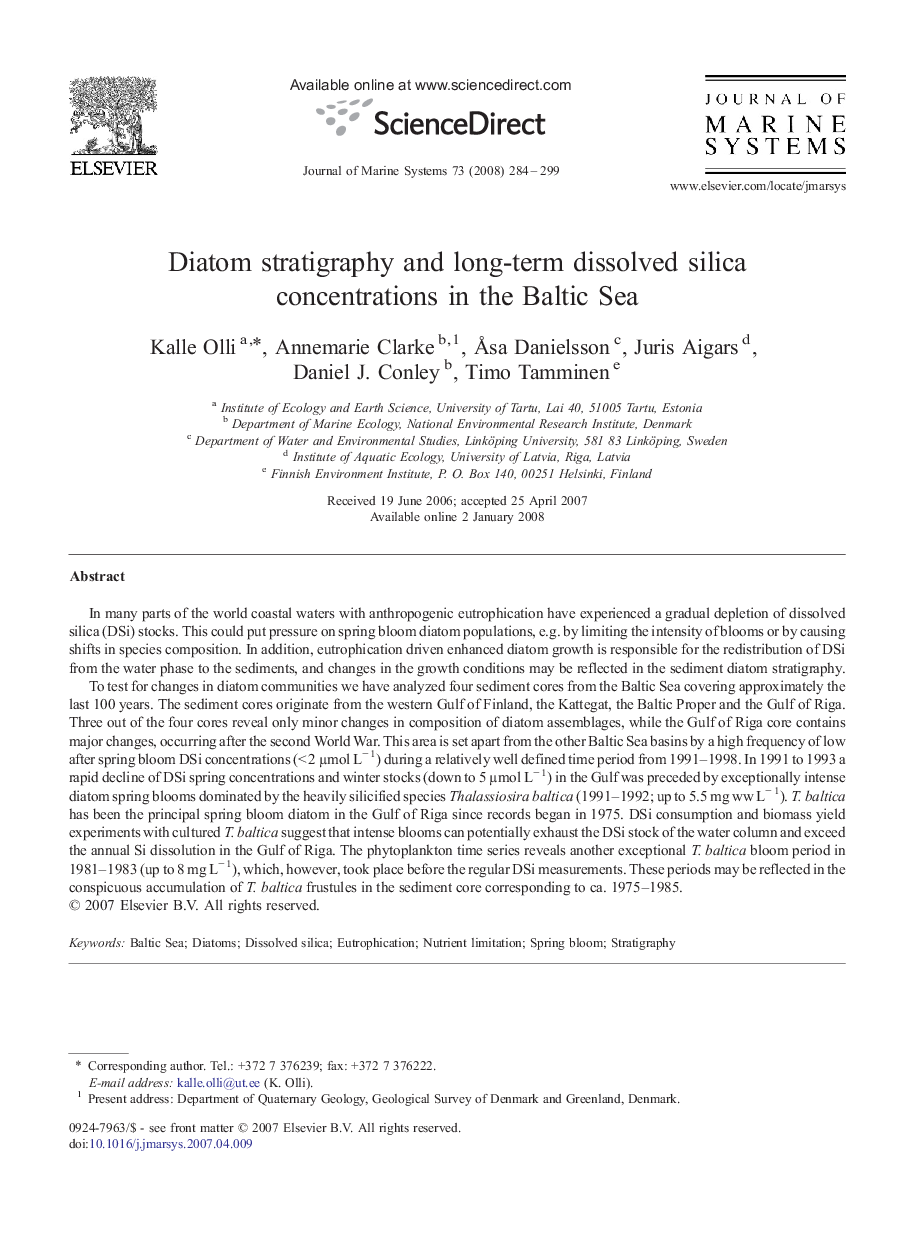| کد مقاله | کد نشریه | سال انتشار | مقاله انگلیسی | نسخه تمام متن |
|---|---|---|---|---|
| 4549061 | 1627344 | 2008 | 16 صفحه PDF | دانلود رایگان |

In many parts of the world coastal waters with anthropogenic eutrophication have experienced a gradual depletion of dissolved silica (DSi) stocks. This could put pressure on spring bloom diatom populations, e.g. by limiting the intensity of blooms or by causing shifts in species composition. In addition, eutrophication driven enhanced diatom growth is responsible for the redistribution of DSi from the water phase to the sediments, and changes in the growth conditions may be reflected in the sediment diatom stratigraphy.To test for changes in diatom communities we have analyzed four sediment cores from the Baltic Sea covering approximately the last 100 years. The sediment cores originate from the western Gulf of Finland, the Kattegat, the Baltic Proper and the Gulf of Riga. Three out of the four cores reveal only minor changes in composition of diatom assemblages, while the Gulf of Riga core contains major changes, occurring after the second World War. This area is set apart from the other Baltic Sea basins by a high frequency of low after spring bloom DSi concentrations (< 2 µmol L− 1) during a relatively well defined time period from 1991–1998. In 1991 to 1993 a rapid decline of DSi spring concentrations and winter stocks (down to 5 µmol L− 1) in the Gulf was preceded by exceptionally intense diatom spring blooms dominated by the heavily silicified species Thalassiosira baltica (1991–1992; up to 5.5 mg ww L− 1). T. baltica has been the principal spring bloom diatom in the Gulf of Riga since records began in 1975. DSi consumption and biomass yield experiments with cultured T. baltica suggest that intense blooms can potentially exhaust the DSi stock of the water column and exceed the annual Si dissolution in the Gulf of Riga. The phytoplankton time series reveals another exceptional T. baltica bloom period in 1981–1983 (up to 8 mg L− 1), which, however, took place before the regular DSi measurements. These periods may be reflected in the conspicuous accumulation of T. baltica frustules in the sediment core corresponding to ca. 1975–1985.
Journal: Journal of Marine Systems - Volume 73, Issues 3–4, October 2008, Pages 284–299